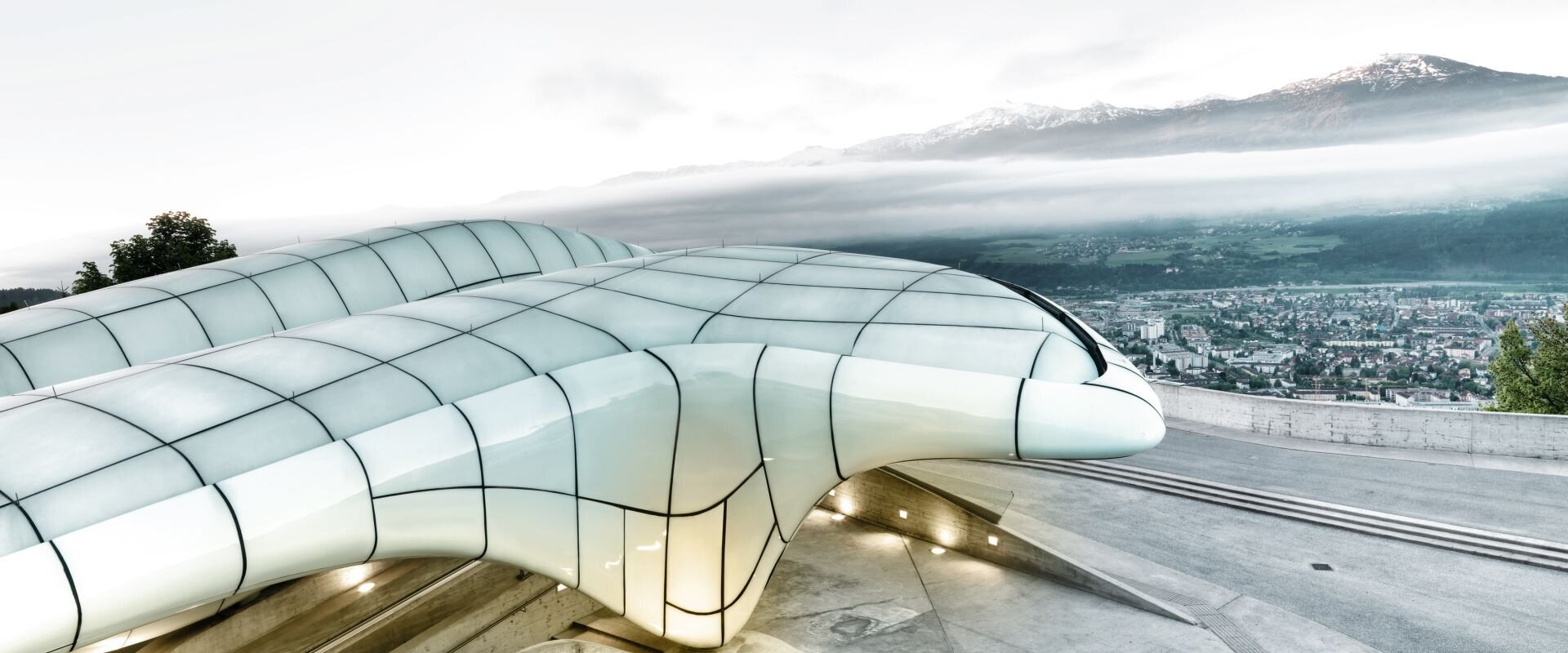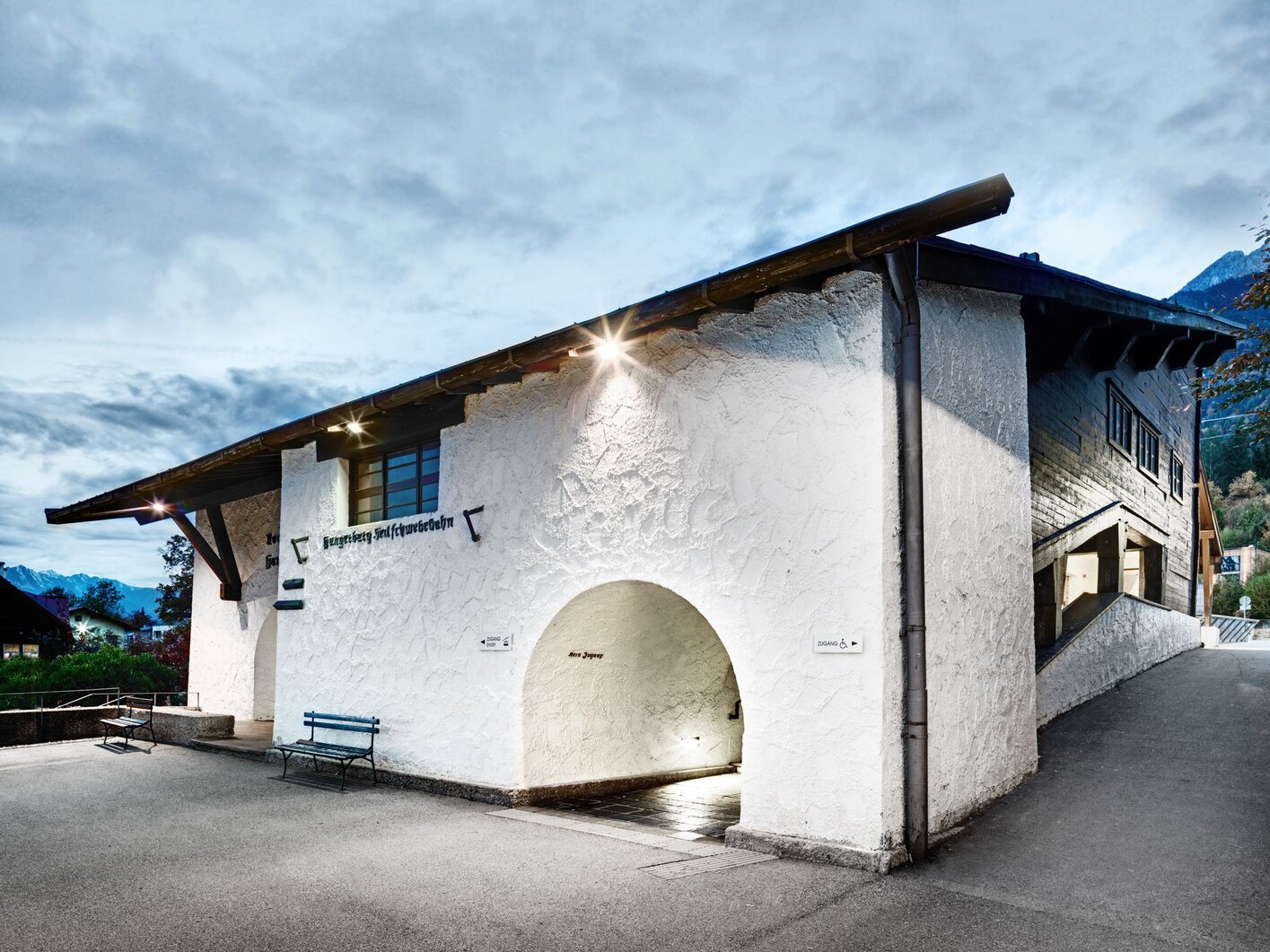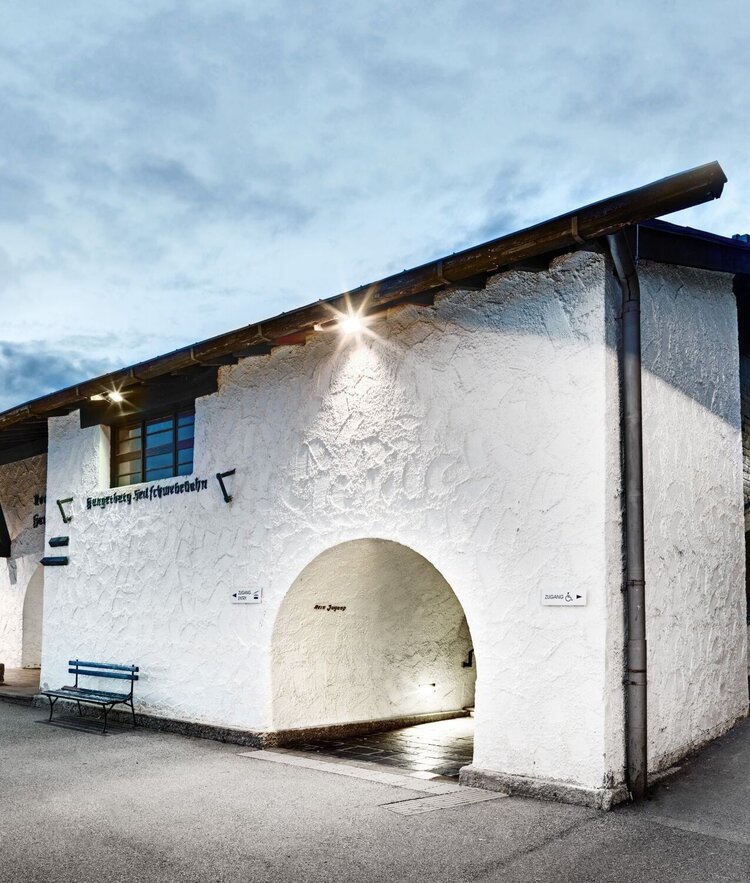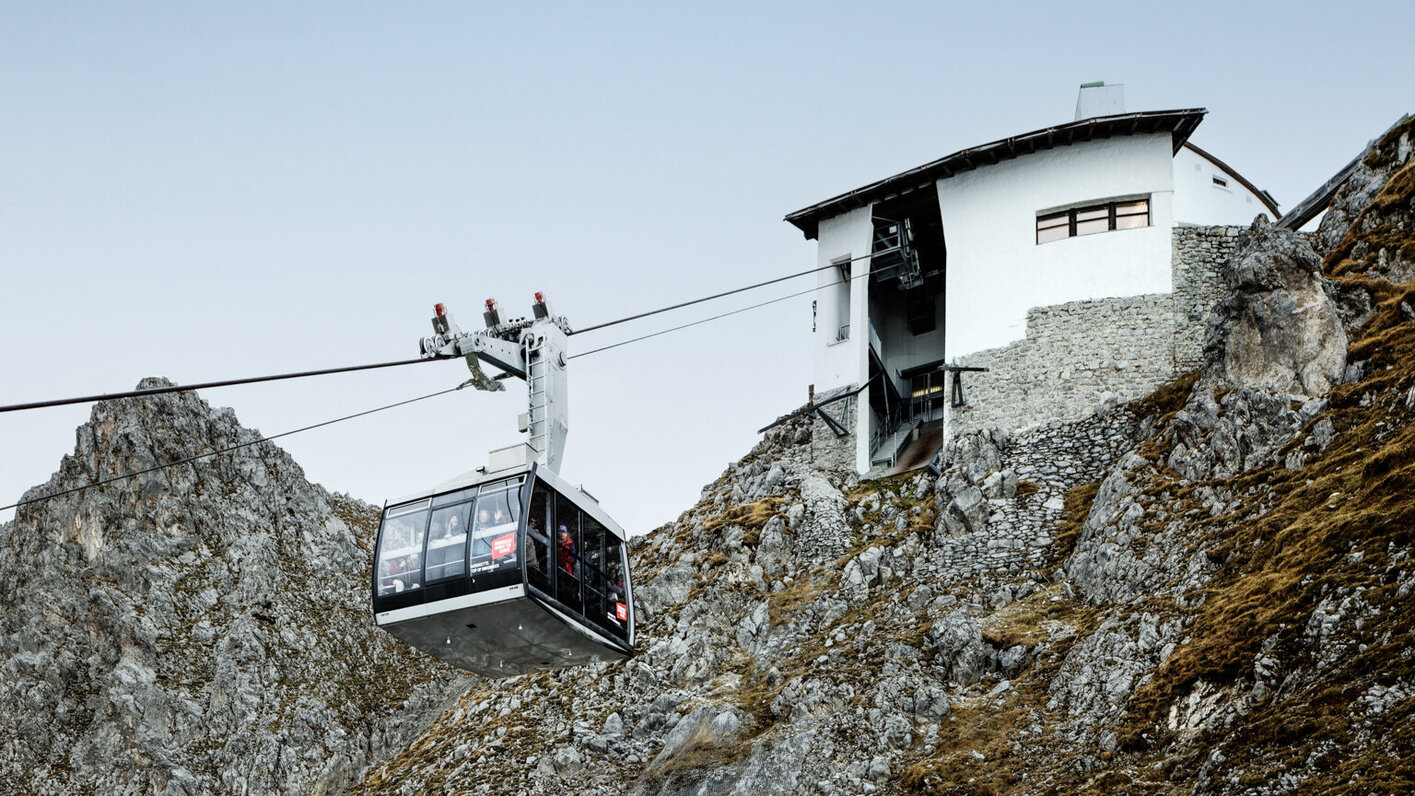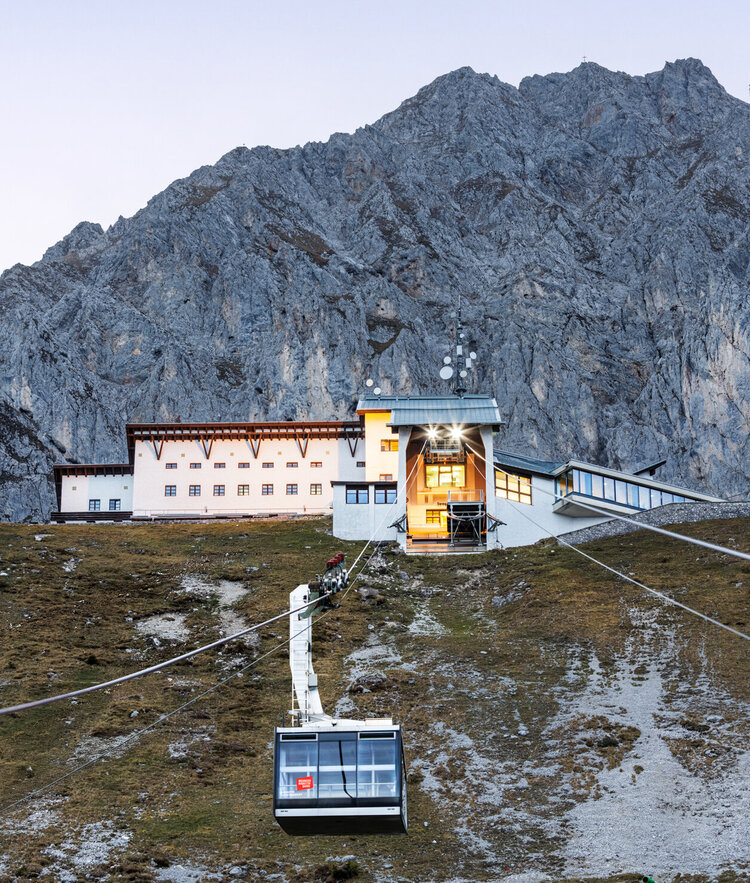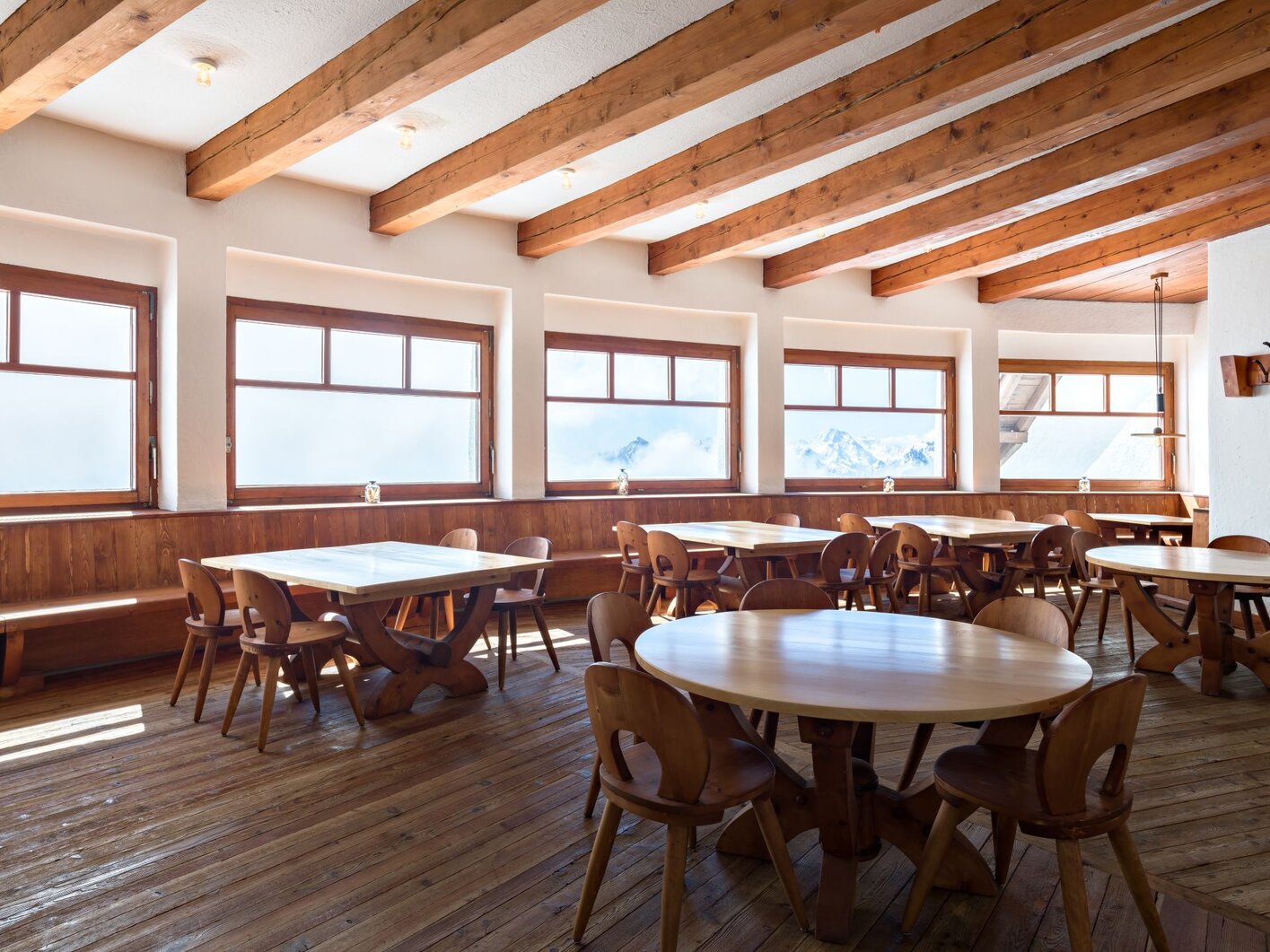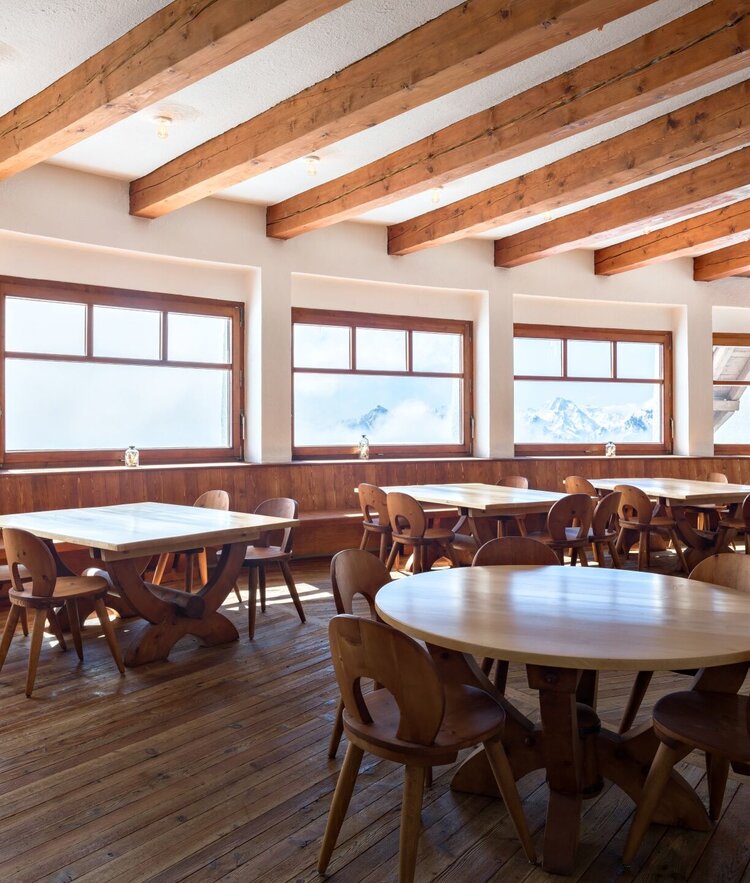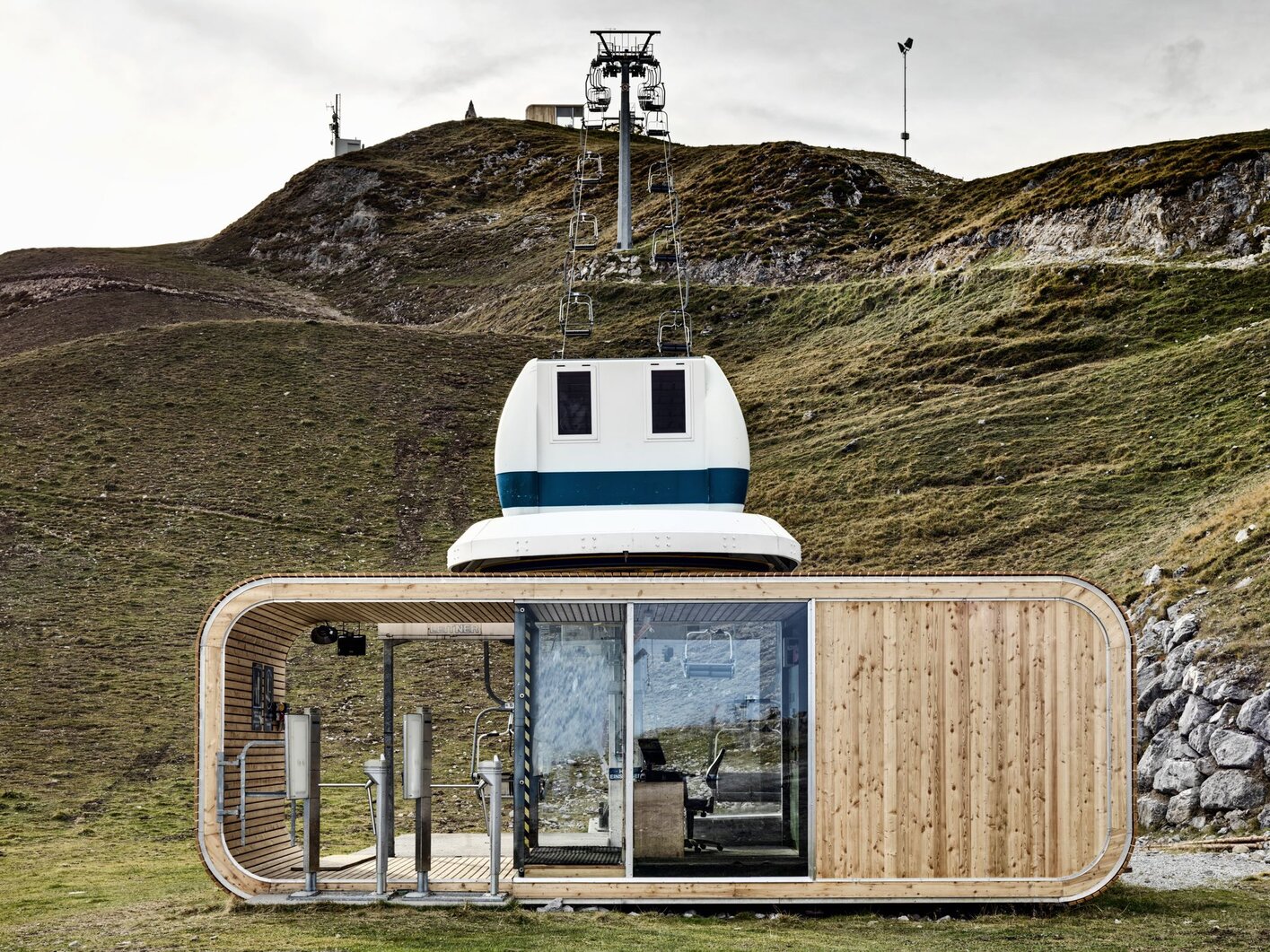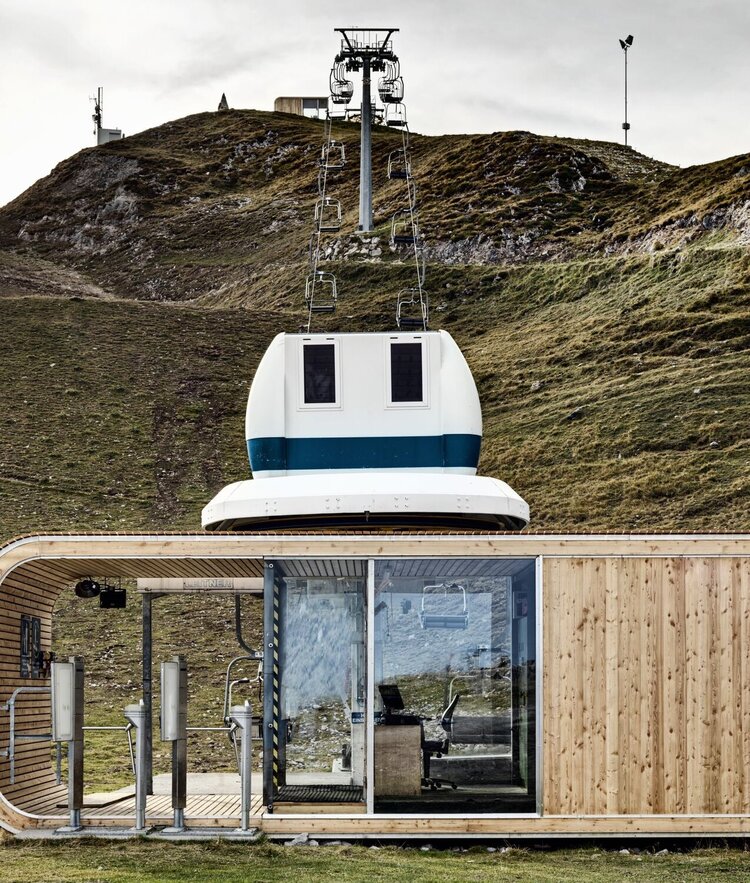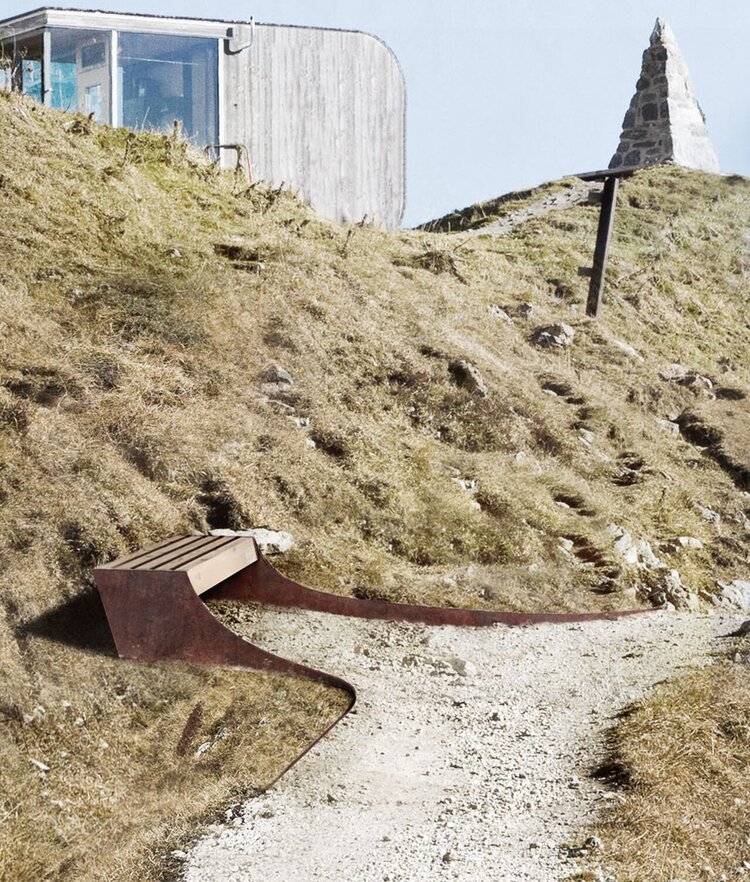The stations of the Innsbruck Nordkettenbahnen are architectural masterpieces. Find out more about the stations of the new Hungerburgbahn designed by star architect Zaha Hadid, the carefully renovated station buildings by Tyrolean architect Franz Baumann and the perspective path on the Seegrube designed by Snøhetta. The history of Tyrolean architecture in the 20th and early 21st centuries can be seen in a small space at Hungerburg: With the Nordkettenbahn valley station from the interwar period by Franz Baumann, the post-war shop porches by Manfred Prachensky and the Hungerburgstation by Zaha Hadid.
close
